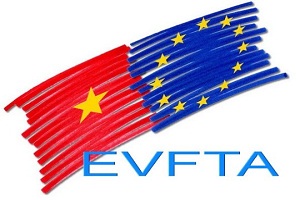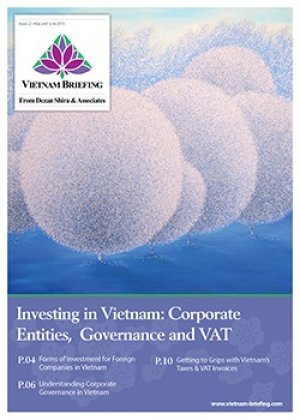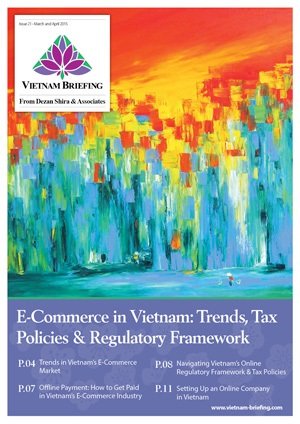An Update on the EU-Vietnam Free Trade Agreement Discussions
By: Dezan Shira & Associates
Editor: Mareike Entzian
 After engaging in talks for 2.5 years, the European Union and Government of Vietnam agreed to the text of the most comprehensive FTA ever to be concluded with a developing country earlier this year. The agreement presents not only opportunities for investors and businesses alike, but on a political level it also establishes a new era in trade relations, which will bind the two partners closer together.
After engaging in talks for 2.5 years, the European Union and Government of Vietnam agreed to the text of the most comprehensive FTA ever to be concluded with a developing country earlier this year. The agreement presents not only opportunities for investors and businesses alike, but on a political level it also establishes a new era in trade relations, which will bind the two partners closer together.
The goal remains to further integrate the local Vietnamese market economy into the global economy, which will set an example for other South East Asian nations and future trade agreements. Despite all the positivity surrounding the agreement, it is important to note that for now only a declaration on the agreement has been signed between the parties. With cautious optimism in mind, the FTA will likely to be signed at ratified until 2017, with provisional entry into force in 2018.
The Agreement
 RELATED: International Tax Planning Services from Dezan Shira & Associates
RELATED: International Tax Planning Services from Dezan Shira & Associates
The main features of the EU-Vietnam FTA have been described as examples for other nations, and a new generation in terms of free trade agreements. Main areas include sections on trade in goods, cross-cutting issues, as well as services and investment. Issues surrounding intellectual property rights and legal security and transparency, especially important for foreign investors, have been settled and will enjoy higher predictability by the local government. It is hoped that with more government security regarding dispute settlement in these areas, a second wave of European investment will flow into the country.
 RELATED: An Overview of Transfer Pricing in Vietnam
RELATED: An Overview of Transfer Pricing in Vietnam
The liberalization of tariffs is sector specific. Some will be cut down by 99 percent as soon as the agreement enters into force. Others will follow after five to seven years while some goods will remain partially protected for as much as 10 years. The EU committed to cutting 99 percent of all tariff lines after seven years, while Vietnam promised the same after 10 years. At entry into force, the European Union declared it will reduce tariffs on 71 percent of the total value of Vietnamese exports, which applies to roughly 84 percent of products.
Vietnam will follow with reduced tariffs on 65 percent of the value of EU exports, which applies to 49 percent of products. The above also factors in the sensitivity, or inclination of a government to retain protectionist trade privileges, of a good. Most sensitive items, such as footwear and apparel and certain food and drink products will remain under tariffs for seven to 10 years after the agreement enters into force.
For the services and investment sector, like banking and other professional services, the agreement means access to a commercially meaningful market and higher protection and standards. The business climate will be more open and stable, allowing EU investors to receive clear commitments for licensing and a reformed approach for investment protection and dispute resolution.
With the road ahead, it remains imperative that stakeholders from both sides continue to be committed to the agreement. To increase mutual cooperation, an entire chapter on cooperation has been added to ensure the implementation of the FTA. Over the next years, the agreement will have to be translated and checked again for any legal loopholes. It will need to be authorized and receive consent from several different parties, to hopefully enter into force in 2018.
|
Asia Briefing Ltd. is a subsidiary of Dezan Shira & Associates. Dezan Shira is a specialist foreign direct investment practice, providing corporate establishment, business advisory, tax advisory and compliance, accounting, payroll, due diligence and financial review services to multinationals investing in China, Hong Kong, India, Vietnam, Singapore and the rest of ASEAN. For further information, please email vietnam@dezshira.com or visit www.dezshira.com. Stay up to date with the latest business and investment trends in Asia by subscribing to our complimentary update service featuring news, commentary and regulatory insight. |
Investing in Vietnam: Corporate Entities, Governance and VAT
 In this issue of Vietnam Briefing Magazine, we provide readers with an understanding of the impact of Vietnam’s new Laws on Enterprises and Investment. We begin by discussing the various forms of corporate entities which foreign investors may establish in Vietnam. We then explain the corporate governance framework under the new Law on Enterprises, before showing you how Vietnam’s VAT invoice system works in practice.
In this issue of Vietnam Briefing Magazine, we provide readers with an understanding of the impact of Vietnam’s new Laws on Enterprises and Investment. We begin by discussing the various forms of corporate entities which foreign investors may establish in Vietnam. We then explain the corporate governance framework under the new Law on Enterprises, before showing you how Vietnam’s VAT invoice system works in practice.
E-Commerce in Vietnam: Trends, Tax Policies & Regulatory Framework
In this issue of Vietnam Briefing Magazine, we provide readers with a complete understanding of Vietnam’s e-commerce industry. We begin by highlighting existing trends in the market, paying special attention to scope for foreign investment. We look at means for online sellers to receive payment in Vietnam, examine the industry’s tax and regulatory framework, and discuss how a foreign retailer can actually establish an online company in Vietnam.
 Tax, Accounting, and Audit in Vietnam 2014-2015
Tax, Accounting, and Audit in Vietnam 2014-2015
The first edition of Tax, Accounting, and Audit in Vietnam, published in 2014, offers a comprehensive overview of the major taxes foreign investors are likely to encounter when establishing or operating a business in Vietnam, as well as other tax-relevant obligations. This concise, detailed, yet pragmatic guide is ideal for CFOs, compliance officers and heads of accounting who need to be able to navigate the complex tax and accounting landscape in Vietnam.
- Previous Article The TPP’s Rules of Origin and Key Tariff Reductions
- Next Article Vietnam Market Watch: Auto Sales, Uber’s Success in Vietnam, and Vietnam’s Economic Growth










